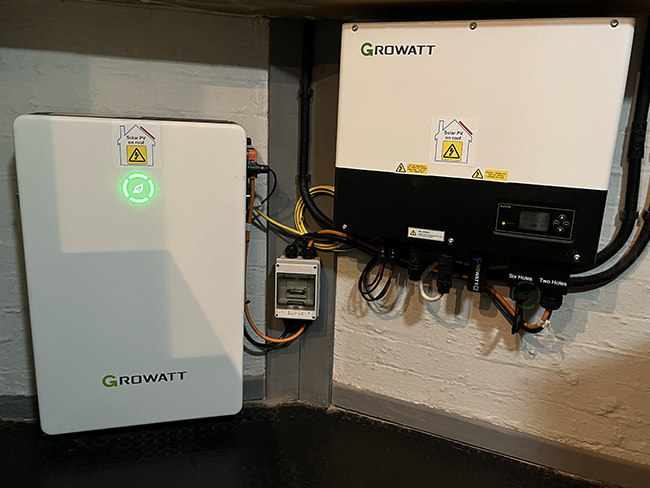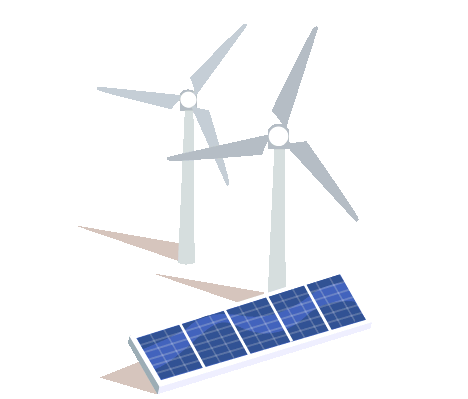Fires, floods, droughts, pollution, extreme weather, vanishing habitats and mountains of plastic. It’s all a bit doom and gloom, isn’t it?
Reducing your carbon footprint is a simple step to fighting the climate crisis and doing the right thing for the planet.
I spent a little time working out my carbon footprint to see where I stand. To see what’s good and where I could make some changes.
I used a few different sources. They all came up with similar numbers, so I went with the most conservative. The sources include World Wildlife Fund Carbon Footprint Calculator, United Nations Carbon Footprint Calculator and carbonfootprint.com.
Here’s a breakdown of my carbon footprint.
Fires, droughts, floods, pollution, extreme weather, vanishing habitats and mountains of plastic. It’s all a bit doom and gloom, isn’t it?
Reducing your carbon footprint is a simple step to fighting the climate crisis and doing the right thing for the planet.
I spent a little time working out my carbon footprint to see where I stand. To see what’s good and where I could make some changes.
I used a few different sources. They all came up with similar numbers, so I went with the most conservative. The sources include World Wildlife Fund Carbon Footprint Calculator, United Nations Carbon Footprint Calculator and carbonfootprint.com.
Here’s a breakdown of my carbon footprint.
Annual Carbon Footprint
7.7 tonnes
5.4 tonnes of individual carbon consumption,
plus 2.3 tonnes of government CO2.
Annual Carbon Footprint
7.7 tonnes
5.4 tonnes of individual carbon consumption,
plus 2.3 tonnes of government CO2.
2.1 – Home
This is based on the size of your home, how many live with you, your heating, energy tariffs, and any efficiency installations.
1.4 – Other stuff
These are items you buy such as clothing, furniture, beauty/cleaning products, pets, phone/tv contracts, recycling.
1.3 – Food
What food do you eat? Less meat and less processed food are better. Local and seasonal are also winners. Food waste is considered.
0.6 – Travel
What vehicle do you have and what mileage do you do? Public transport usage and the big killer…how many flights you make, this is the worst of them all.
2.3 – UK Government
This is the government’s total carbon consumption, covering roads, construction, education, defence, health, etc., shared between the UK’s population. For 2018 it was 2.3 tonnes of CO2 per person.
2.1 – Home
This is based on the size of your home, how many live with you, your heating, energy tariffs, and any efficiency installations.
1.4 – Other stuff
These are items you buy such as clothing, furniture, beauty and cleaning products, pets, phone/tv contracts, recycling.
1.3 – Food
What food do you eat? Less meat and less processed food are better. Local and seasonal are also winners. Food waste is considered.
0.6 – Travel
What vehicle do you have and what mileage do you do? Public transport usage and the big killer…how many flights you make, this is the worst of them all.
2.3 – UK Government
This is the government’s total carbon consumption, covering roads, construction, education, defence, health, etc., shared between the UK’s population. For 2018 it was 2.3 tonnes of CO2 per person.
How does this stack up?
My carbon footprint
UK average
Global average
How does this stack up?
My carbon footprint
UK average
Global average
Update – Solar panels and battery.
We’ve recently installed 12 solar panels and a 6kW battery. This almost produces enough electricity for everything we use. Even on rainy days.
And, as if that wasn’t good enough, we also export any electricity we haven’t used back to the grid. Our energy supplier is paying us around £30 to £40 a month for the extra electricity we’re generating.
We’ve recently installed 12 solar panels and a 6kW battery. This almost produces enough electricity for everything we use. Even on rainy days.
And, as if that wasn’t good enough, we also export any electricity we haven’t used back to the grid. Our energy supplier is paying us around £30 to £40 a month for the extra electricity we’re generating.
Carbon offsetting – the big elephant in the room?
Did you know that with carbon offsetting, you and businesses can help the planet by funding projects that cut emissions? Think wind and solar power, or planting trees.
It sounds like a good thing, right?
Carbon offsetting does have its upsides. It helps cut emissions and supports eco-friendly projects. But there’s also a chance that some projects might not be measurable or even deliver any meaningful results. It’s a mixed bag.
There’s also an argument that offsetting can lead people or businesses to think they don’t need to reduce their emissions because they have offset them elsewhere.
How does offsetting work?
Carbon offsetting is big business. If you want to offset your emissions, you buy ‘carbon credits’. These are traded just like any other commodity.
Where do these Carbon Credits come from?
Carbon credits are created from cool projects like green farming, tree planting or anything that reduces, avoids, or destroys emissions. The trick is verifying that the projects and credits live up to their promise.
Who certifies carbon credits?
There are a few trusted groups that give carbon credits the green light, like Sylvera, Gold Standard and Verra.
But a recent investigation by The Guardian showed that around 90% of carbon credits approved by Verra are worthless. Verra is one of the top carbon certifiers, used by some big names like Shell, Disney, and Gucci.
Here’s what Verra, Sylvera and Ecologi had to say about The Guardian article.
Carbon offsetting – the big elephant in the room?
Did you know that with carbon offsetting, you and businesses can help the planet by funding projects that cut emissions? Think wind and solar power, or planting trees.
It sounds like a good thing, right?
Carbon offsetting does have its upsides. It helps cut emissions and supports eco-friendly projects. But there’s also a chance that some projects might not be measurable or even deliver any meaningful results. It’s a mixed bag.
There’s also an argument that offsetting can lead people or businesses to think they don’t need to reduce their emissions because they have offset them elsewhere.
How does offsetting work?
Carbon offsetting is big business. If you want to offset your emissions, you buy ‘carbon credits’. These are traded just like any other commodity.
Where do these Carbon Credits come from?
Carbon credits are created from cool projects like green farming, tree planting or anything that reduces, avoids, or destroys emissions. The trick is verifying that the projects and credits live up to their promise.
Who certifies carbon credits?
There are a few trusted groups that give carbon credits the green light, like Sylvera, Gold Standard and Verra.
But a recent investigation by The Guardian showed that around 90% of carbon credits approved by Verra are worthless. Verra is one of the top carbon certifiers, used by some big names like Shell, Disney, and Gucci.
Here’s what Verra, Sylvera and Ecologi had to say about The Guardian article.
Carbon offsetting seems like a bit of a tricky landscape, doesn’t it?
My take on reducing your carbon footprint.
If the carbon credits and sustainability projects have top-notch certifications, carbon offsetting can be a great way to make a positive impact.
But, whether you’re a company or a person, your main goal has to be cutting down your carbon footprint, not just green-wash it with offsets.
Carbon offsetting seems like a bit of a tricky landscape, doesn’t it?
My take on reducing your carbon footprint.
If the carbon credits and sustainability projects have top-notch certifications, carbon offsetting can be a great way to make a positive impact.
But, whether you’re a company or a person, your main goal has to be cutting down your carbon footprint, not just green-wash it with offsets.
Being climate positive.
I’m aiming to reduce my carbon footprint of 7.7 tonnes.
Alongside this, making regular contributions to Ecologi with every invoice payment I receive. Ecologi not only plant trees, but also fund certified, high-quality carbon reduction projects.
With carbon offsetting included, I’m carbon neutral.
Being climate positive.
I’m aiming to reduce my carbon footprint of 7.7 tonnes.
Alongside this, making regular contributions to Ecologi with every invoice payment I receive. Ecologi not only plant trees, but also fund certified, high-quality carbon reduction projects.
With carbon offsetting included, I’m carbon neutral.
If you’d like to find out more about how we can work together, arrange a meeting, or discuss potential projects, give me a call on 07932 102135 or get in touch here.






